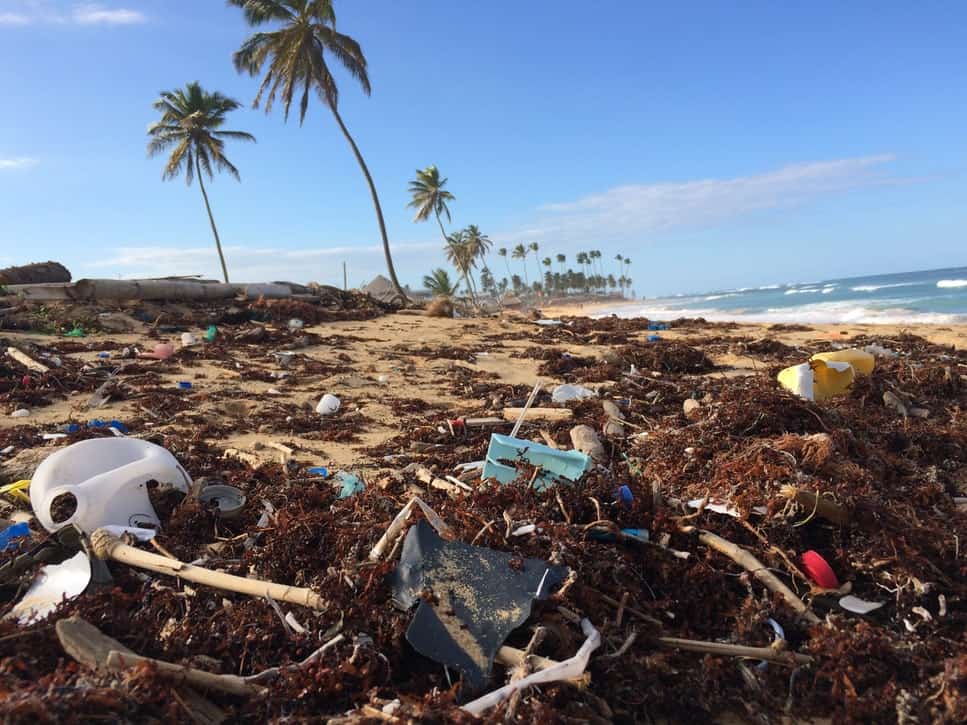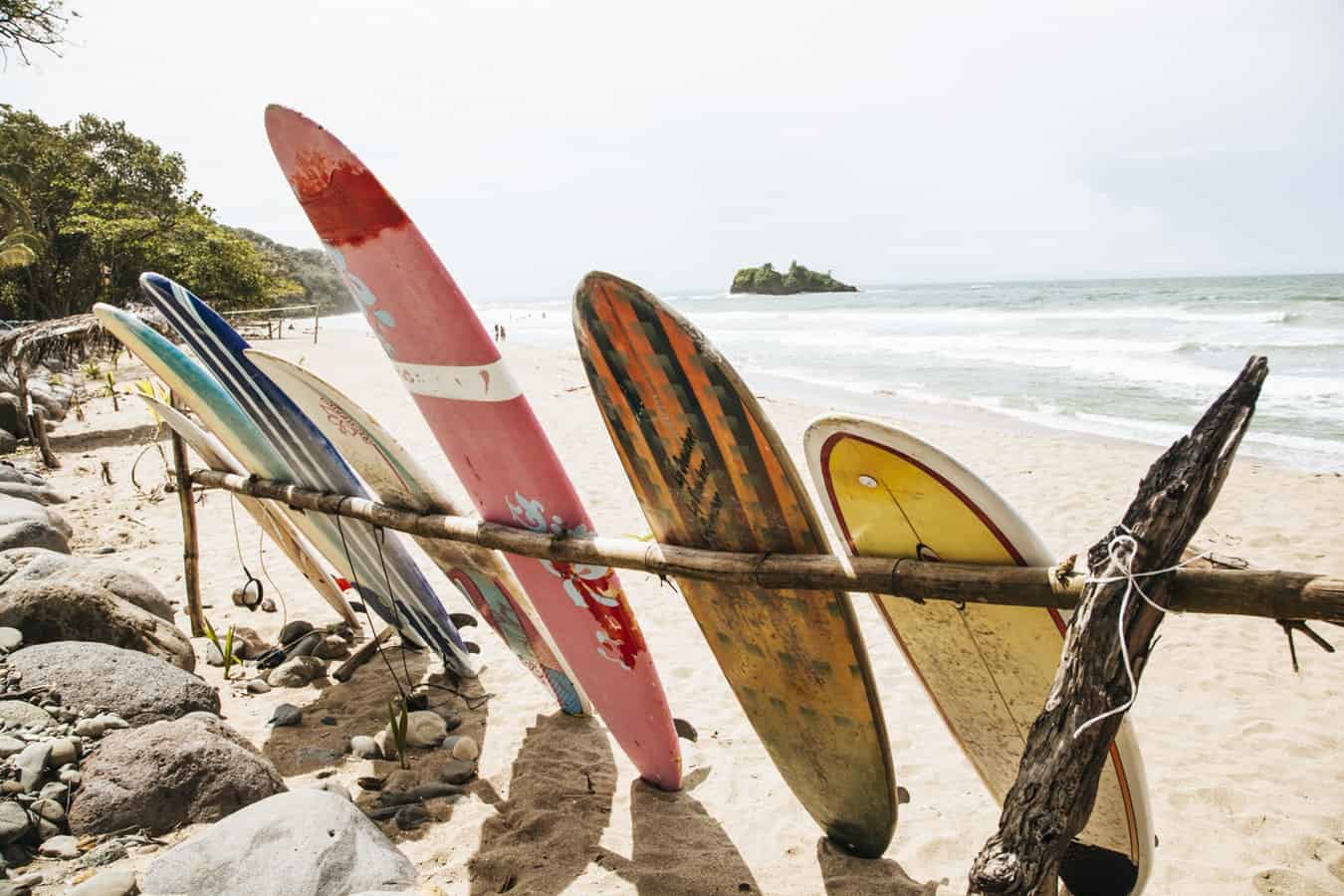Chances are if you love to surf, you love clear waters, vibrant sunsets and clean beaches. In other words, you love mother earth! Unfortunately, mother earth is in a crisis. She is suffering from human-caused climate change. It is imperative that we all take the responsibility to save our earth. Therefore, it’s important to know how our favorite past times, products, vehicles and establishments impact the environment. I love surfing, so I decided to investigate the possible impacts of surfing on our environment.
So, is surfing bad for the environment? The short answer is no, surfing is not bad for the environment. In fact, it’s a pretty “clean” past time. However, surfing materials and surfing associated travel can have a negative impact on the environment.
Let’s celebrate surfing as an environmentally friendly past time and find ways to mitigate its negative effects.
Climate Change and The Ocean
Before we can start talking about whether or not surfing is bad for the environment, we must first determine what even makes something good or bad! This all comes back to climate change. So, strap on your learning caps and settle in for a crash course on climate change.
Climate change refers to global warming and the associated effects of global warming. It is occurring at a rapid rate. In the past 50 years, scientists have recorded temperatures climbing at the fastest rate in recorded history. You might hear someone say, “But this has happened before! Climate change occurs naturally! 50 million years ago it was literally 80 degrees Fahrenheit in Antarctica!” Well yes, you’re absolutely correct. Just as the temperature of earth determined dinosaurs’ environments 50 million years ago, it will determine our environment as well. Our climate is getting warmer and warmer, and this temperature change is having countless effects on our local and global environment.
Some effects of climate change include: irregular weather, which has a huge effect on farmers; extreme weather, which effects us via natural disasters, particularly tropical storms such as hurricanes and cyclones; rising sea levels, which put freshwater supplies at risk and may damage or destroy human costal infrastructure; and warmer ocean water, which damages coral reefs, fisheries, and puts marine life at risk. There are many more effects, but these are some of the biggest. Furthermore, take note surfers: as sea levels continue to rise, it will have a severe effect on regular low tide reef.

So, how do we stop climate change? This time, unlike the global warming which occurred 50 million years ago, climate change is caused by human emissions of carbon dioxide and other greenhouse gasses. When we burn fossil fuels, we release a greenhouse gas called carbon dioxide, aka C02, which in turn heats up the earth.
Let’s break it down. Fossil fuels are fuels that were formed millions of years ago through the natural anaerobic decomposition of living organisms. In other words, fossil fuels (coal, oil and natural gas) are basically made up of millions of dead plants and animals that roamed or grew alongside dinosaurs. Fossil fuels include coal, oil and natural gas. When these fossil fuels are burned (like when you run your car on a gas engine), they release CO2 into the environment. The CO2 is a greenhouse gas, meaning it traps heat close to the earth and helps the earth keep some of the heat and energy from the sun. Without greenhouse gases, our earth would be freezing. We wouldn’t be able to surf anymore because entire oceans would be frozen! However, with too much greenhouse gas, the temperature rises at a rapid rate causing climate change and it’s associated negative impacts on our beloved planet.
The moral of the story? We need to stop releasing so much greenhouse gas into the environment. When an activity does not release any greenhouse gasses into the environment or contribute to environmental degradation, an activity is called “clean”. Luckily for us, surfing is a pretty “clean” activity.
Why Surfing is Good for the Environment
Surfing is good for the environment because it does not inherently release greenhouse gasses into the environment or otherwise contribute to environmental degradation. Environmental degradation is caused by our use of valuable natural resources, disturbance of natural ecosystems or habitats, littering, polluting, harming or interfering with wildlife. Let’s take a moment and celebrate surfing as a clean and fun past time!
However, surfing, surfing materials/gear and surfing associated travel can have a negative impact on the environment.
Why Surfing Can be Bad for the Environment and What to Do About It
Surfing can have a negative effect on the environment for three main reasons. Luckily, all three are possible to mitigate.
First, surfing may disturb natural ecosystems and habitats. By playing in the water, you may be disturbing local marine life. Avoid surfing in or near tropical coral reef environments at all costs. It is imperative that you do not step on or otherwise disturb these environments, as they are highly fragile and already being strongly effected by climate change via a process called coral bleaching. They’re also extremely important! Tropical coral reefs host the greatest species diversity of any marine ecosystem. They also produce around half of all oxygen on planet earth and absorb nearly a third of all the carbon dioxide on planet earth. To protect tropical coral reef environments, don’t surf near them.
The second reason surfing may have a negative effect on the environment is due to the transit required to surf. Transit associated with surfing may have the largest negative impact on the environment. Chances are, unless you’re lucky enough to live so close your surf spot that you can walk or ride your bike or long board, you probably drive to the beach. Every time you drive your car, you are using gasoline, which is a fossil fuel, which in turn releases CO2, which in turn warms the environment, which in turn causes climate change. If possible, try to get yourself and your surfboard to the beach without using any fossil fuels. You can get a workout in before you even get to the beach! If this isn’t possible, consider carpooling or taking public transit to limit the number of vehicles in use. By doing this, you will be reducing the amount of CO2 released.

Furthermore, if you’re an avid surfer, chances are you’ve dreamed of surfing in Bali, Hawaii or other incredible surfing destinations. These destinations are spectacular, but (unless you’re extremely lucky) they also likely require flying halfway around the world. Flying uses A LOT of fossil fuels and increases your carbon footprint drastically. Your carbon footprint refers to how much carbon you are personally responsible for emitting into the environment. As a frame of reference, every year, the aviation industry releases over 800 million metric tons of CO2 into the environment. The best way to mitigate this is to avoid flying when possible. Find a surf spot that is closer to you and eliminates your need to fly. You’ll be saving the earth.
The third main reason surfing may have a negative impact on the environment is because of the materials associated with surfing. Let’s focus on surfboards. Surfboards are constructed of raw materials, which deplete resources. Their construction and transport from their manufacturers to a surf store or their new purchasers also likely requires fossil fuels. Moreover, when you’re done with your surfboard, it may end up in a landfill. To mitigate this problem, invest in a sustainably made surfboard, consider second-hand surfboards, and take good care of your board to prolong its life!
Luckily for you, surfing is already a clean past time, and now you know ways to make it even cleaner! Get out there and get surfing. Have fun and be safe. Surf’s up!
Related Questions:
How Can I Join Beach Clean Ups?
Awesome that you’re taking this initiative! I’ve found some great beach cleanups on Meetup.com or Facebook.com. Just type in your location and what you’re looking for into the search bar. For example, “Malibu, Community beach clean up.” I’ve also found some great beach clean ups at local youth hostels, community centers, or surfer bars. Ask around and check out some flyer boards. If you still can’t find any, why not start one! Invite your friends and get out to do some good.
Where Can I Find Used Surfboards?
Lots of places! Your local surf shop might even have some in stock. There are also websites online dedicated solely to used surfboards. Plus you can always check out craigslist or Facebook marketplace to find some great used surfboards – especially if you live close to some sweet surf spots.
What Are Other Ways to Help Protect the Environment?
There are many ways to help protect the environment. Practice a sustainable lifestyle, compost, use clean energy when possible, support organizations that are conscious of their environmental impacts, limit your meat consumption, limit air travel when possible, the list goes on and on. If you’re not sure where to begin, a great starting point is always to get informed. One of the best ways to get informed is to calculate your carbon footprint here: https://www.carbonfootprint.com/calculator.aspx. By calculating your carbon footprint, you’ll become aware of your personal impact on the environment. It may shock you and jump-start your environmental pursuits!


